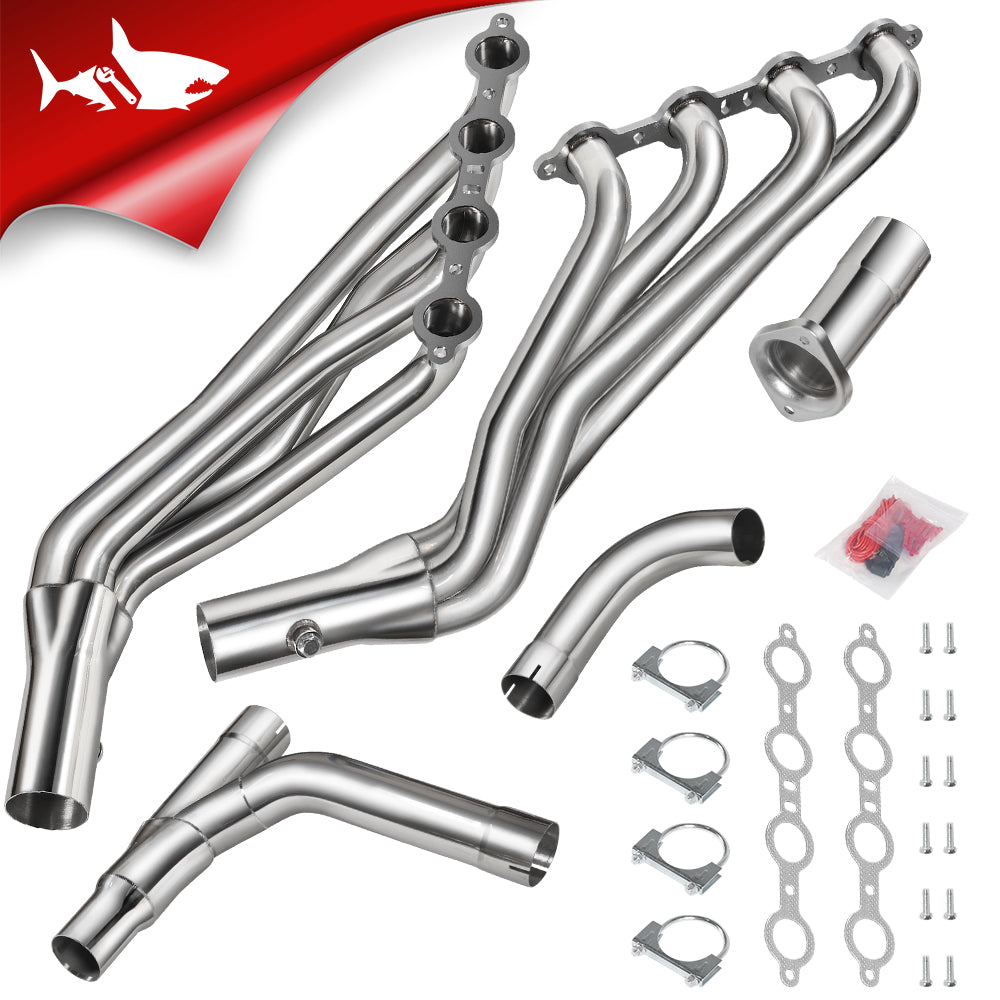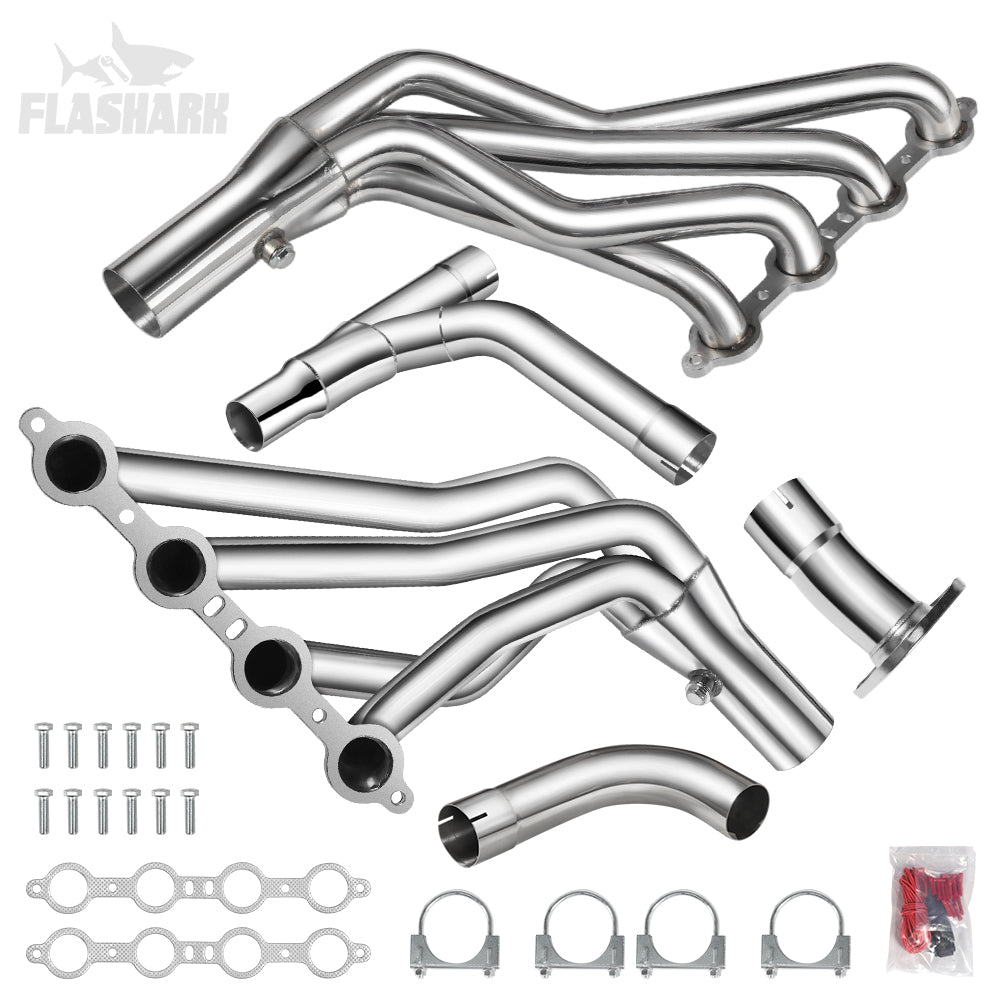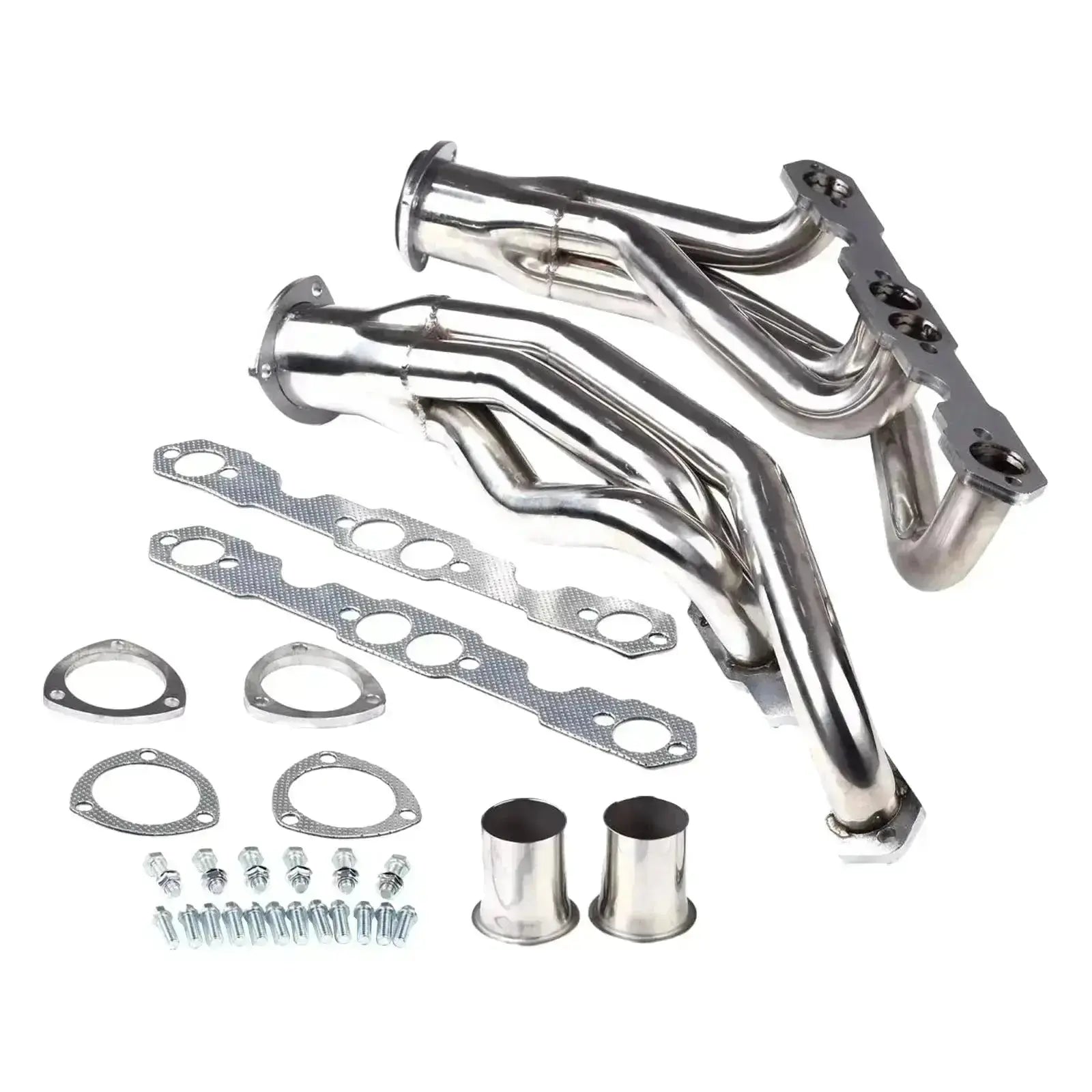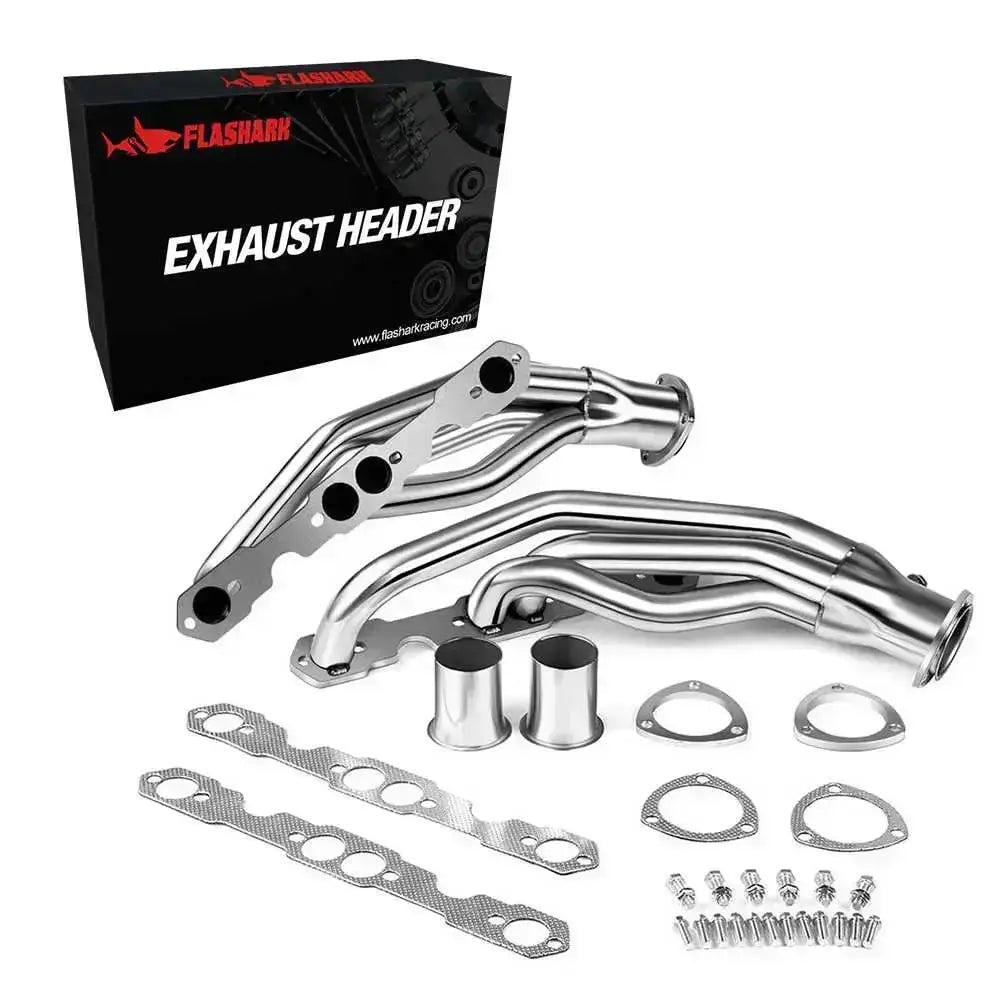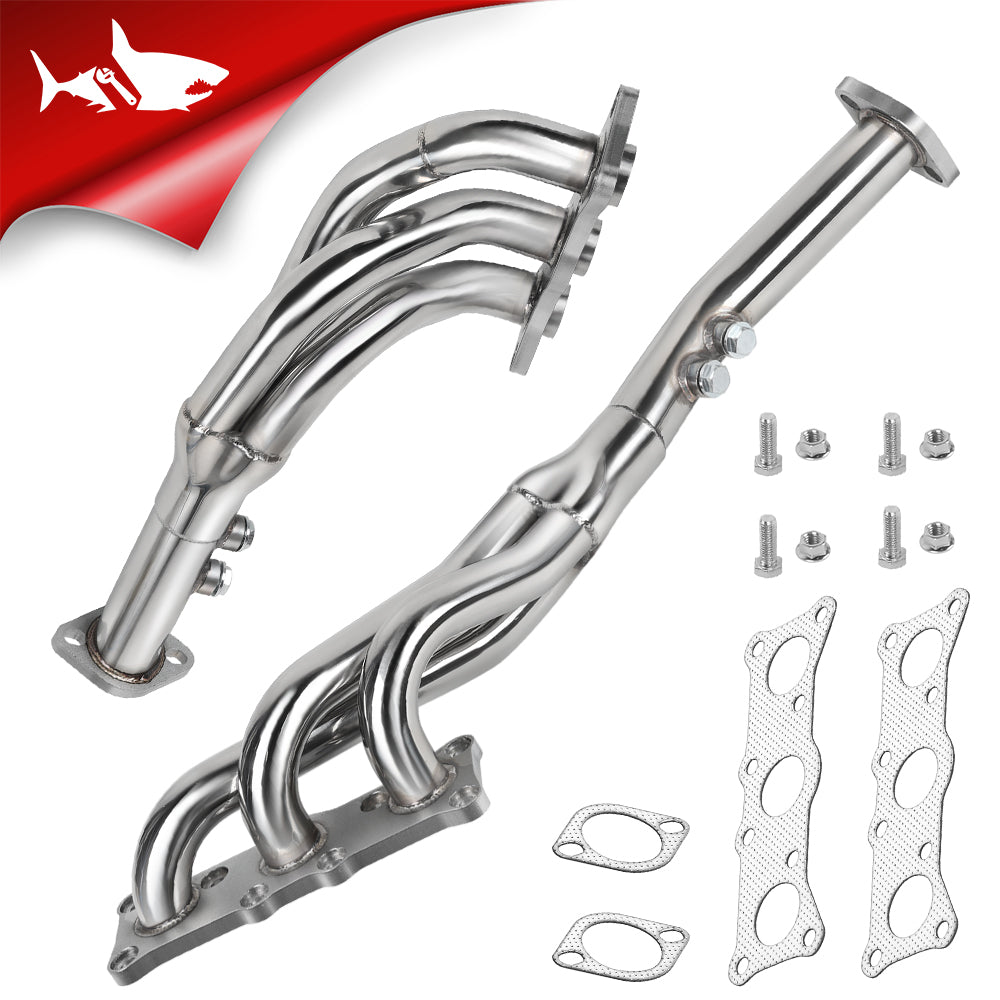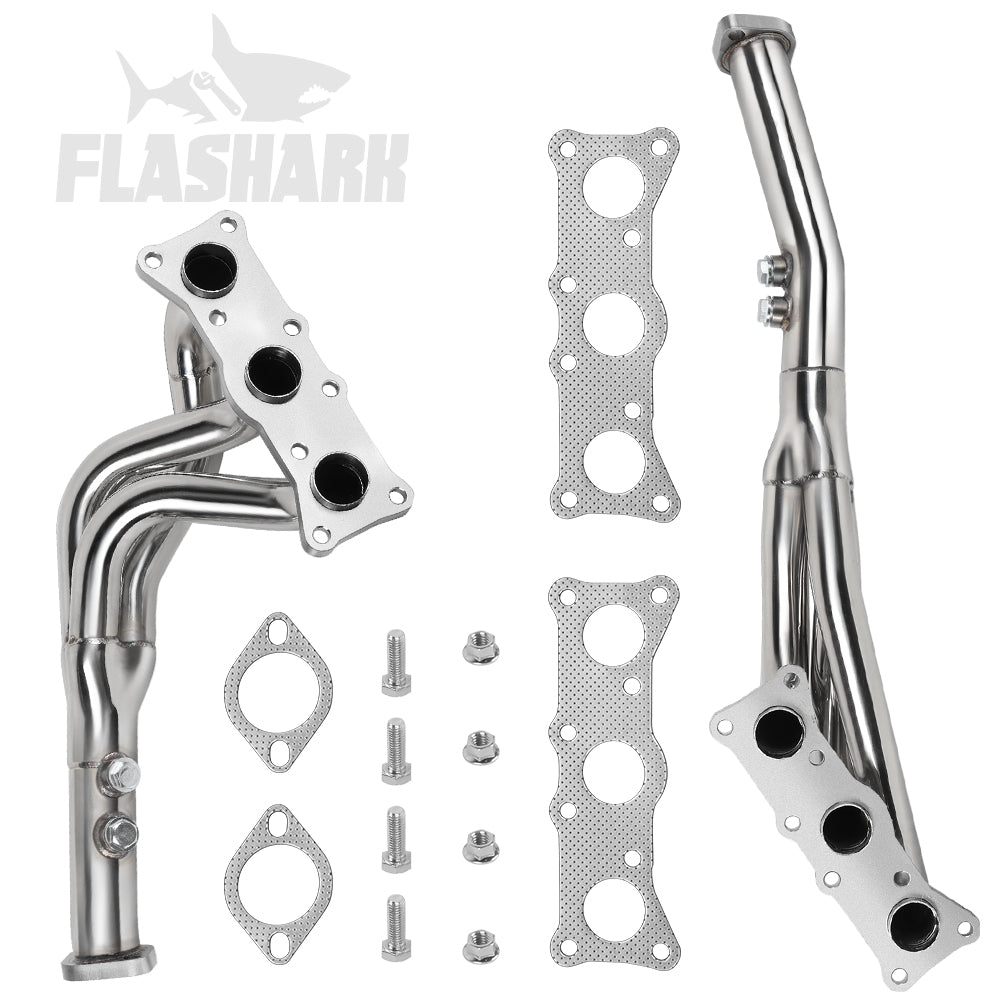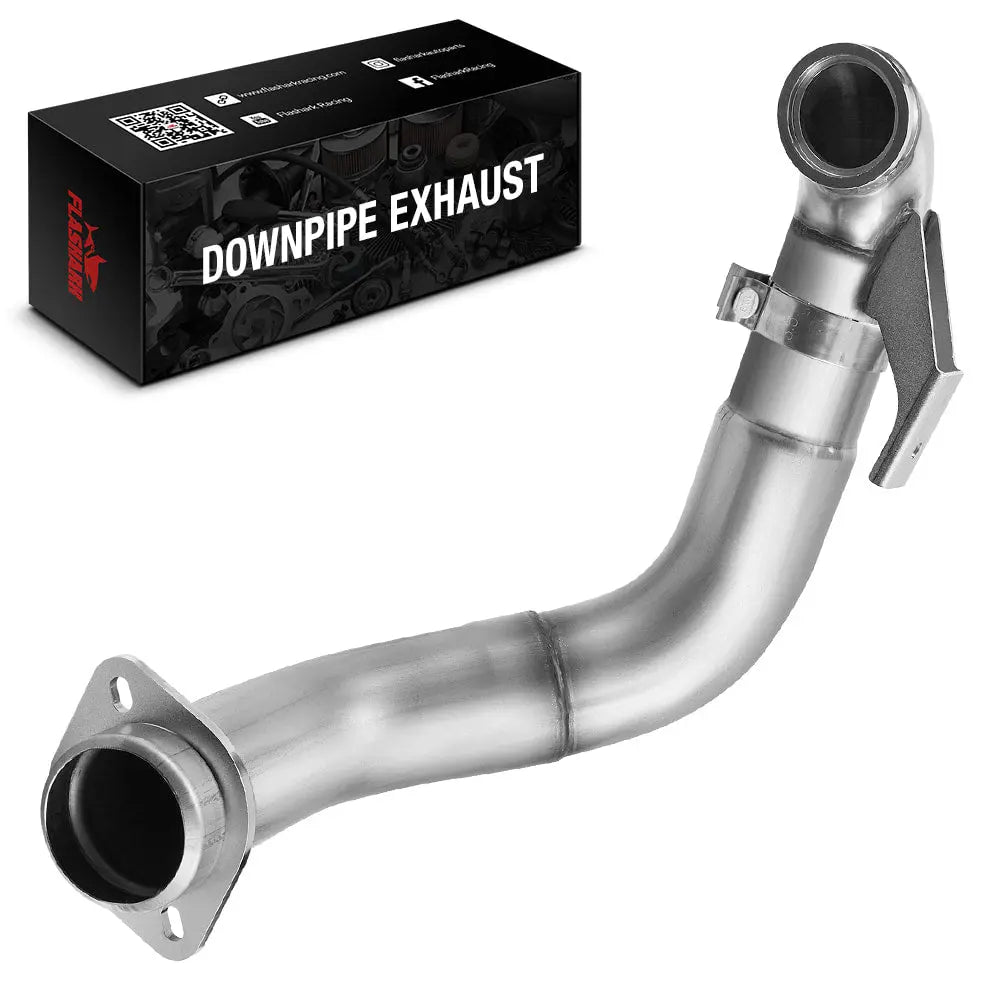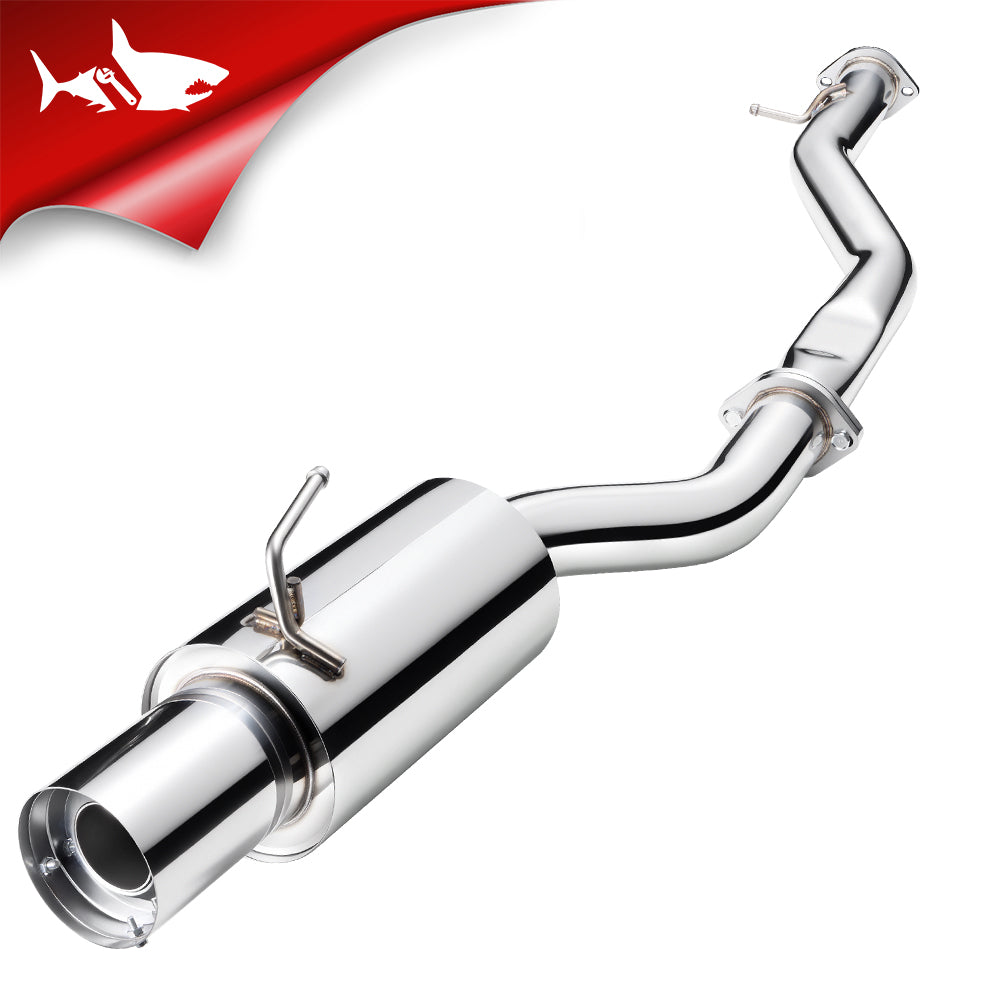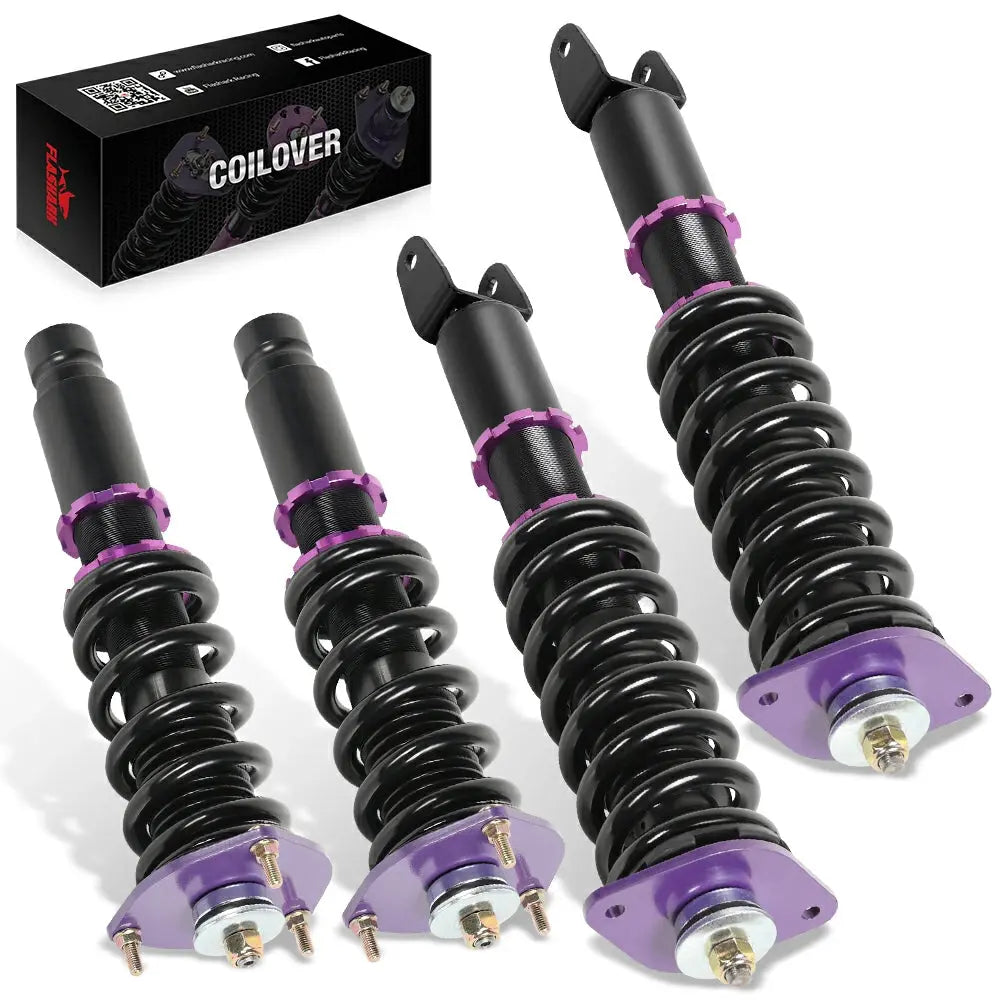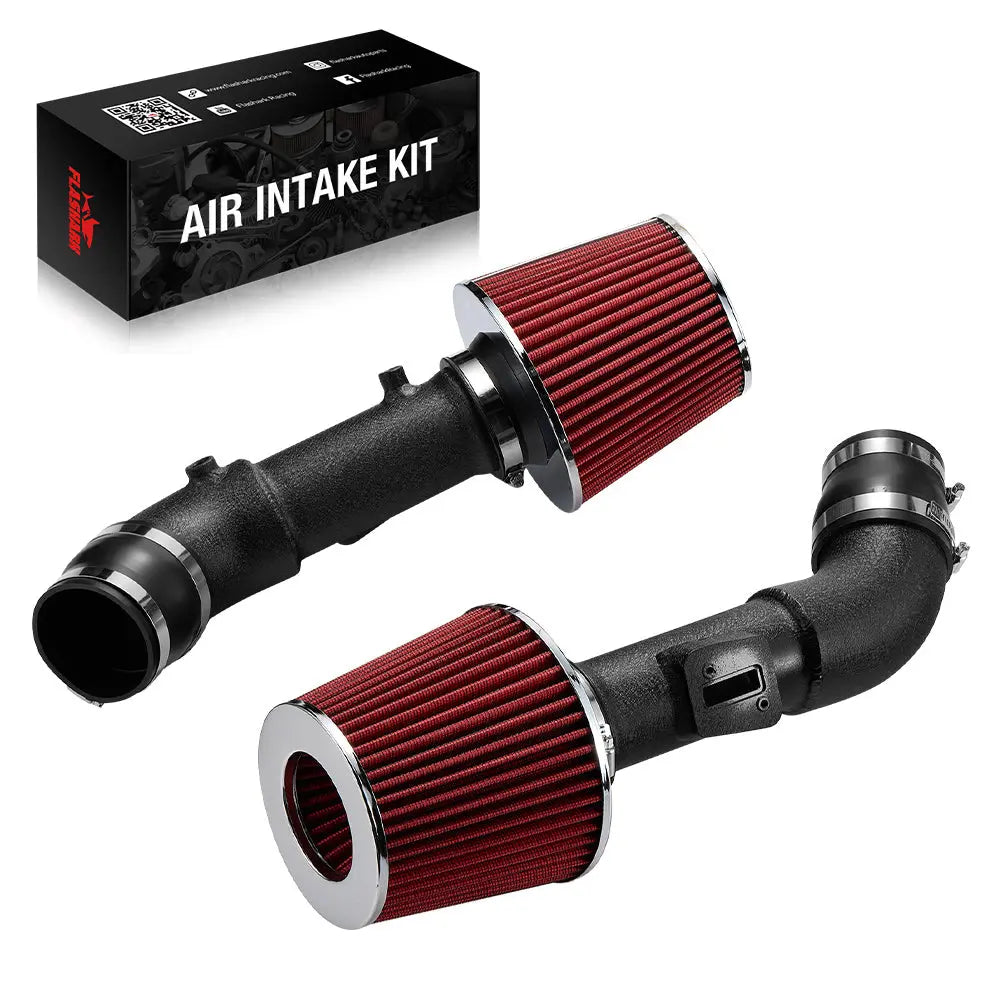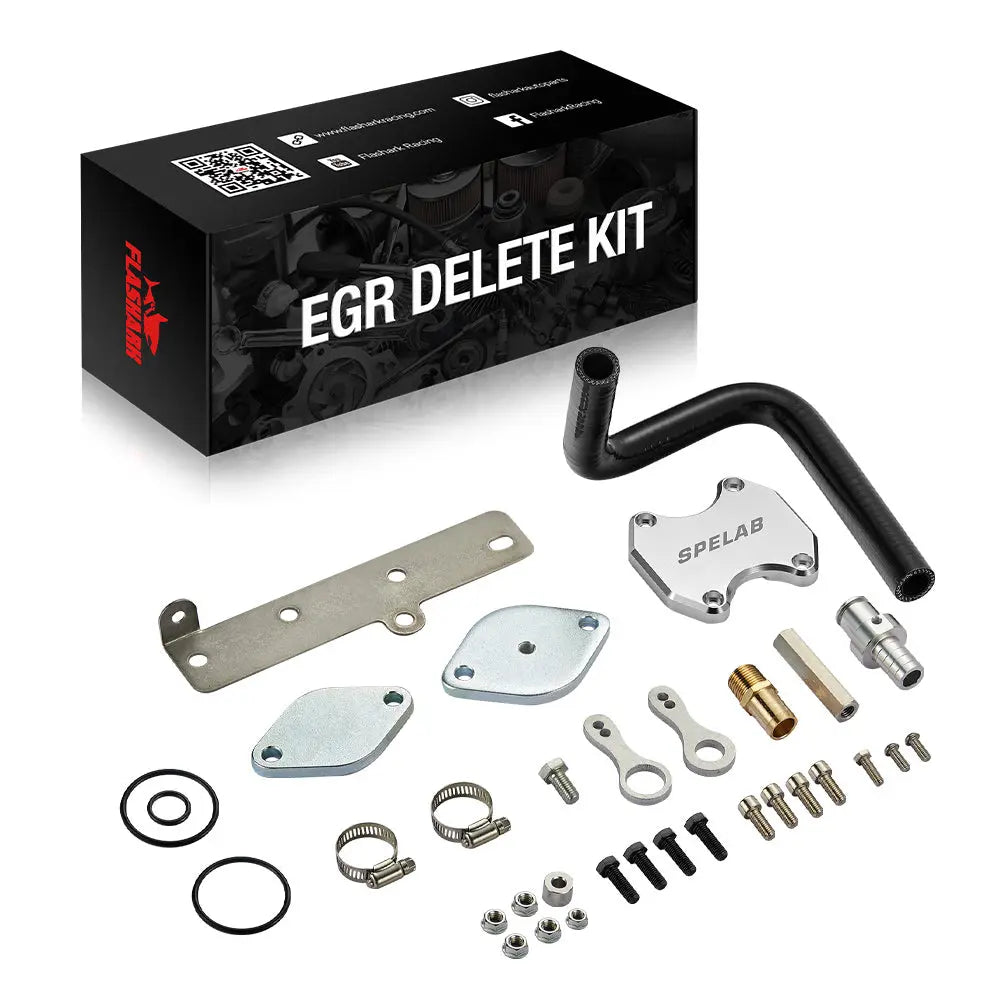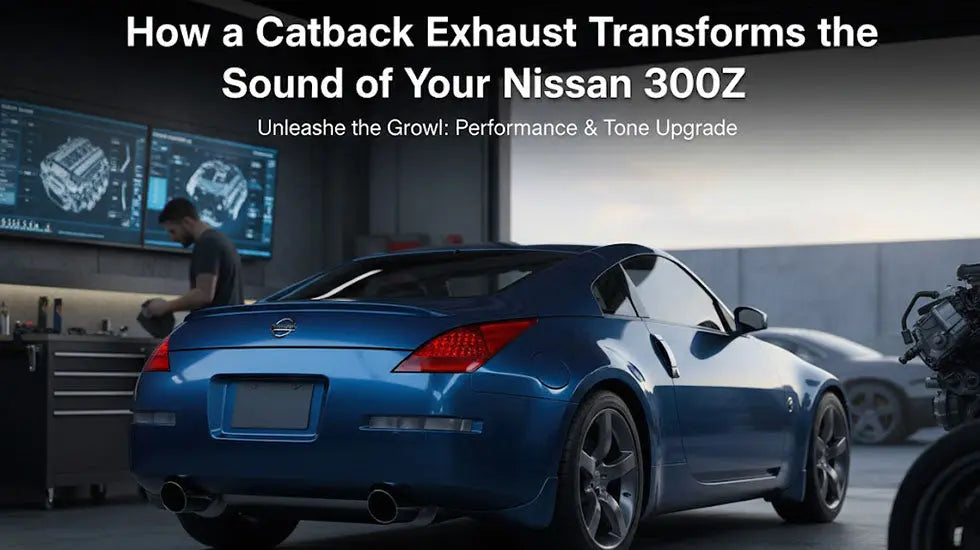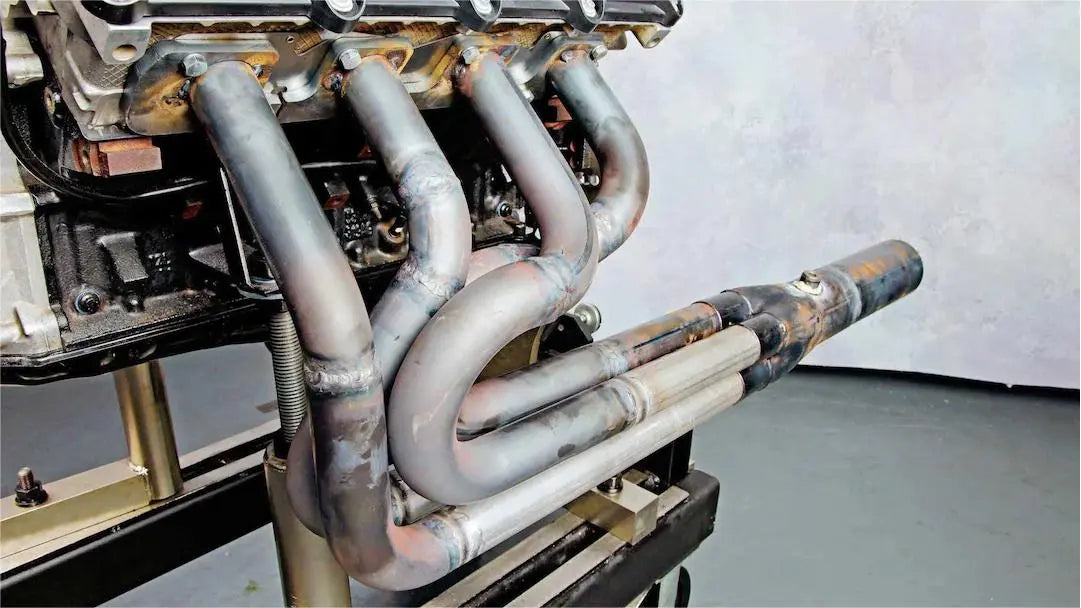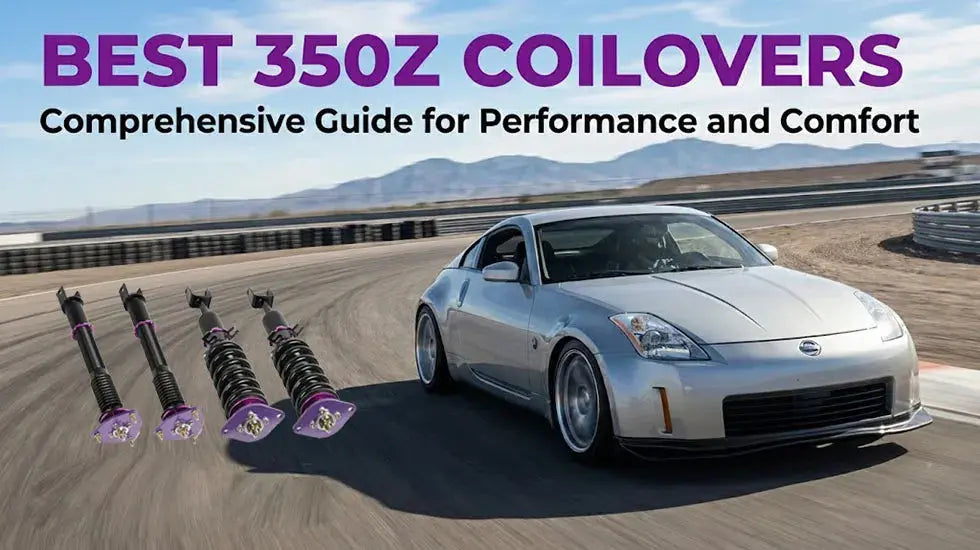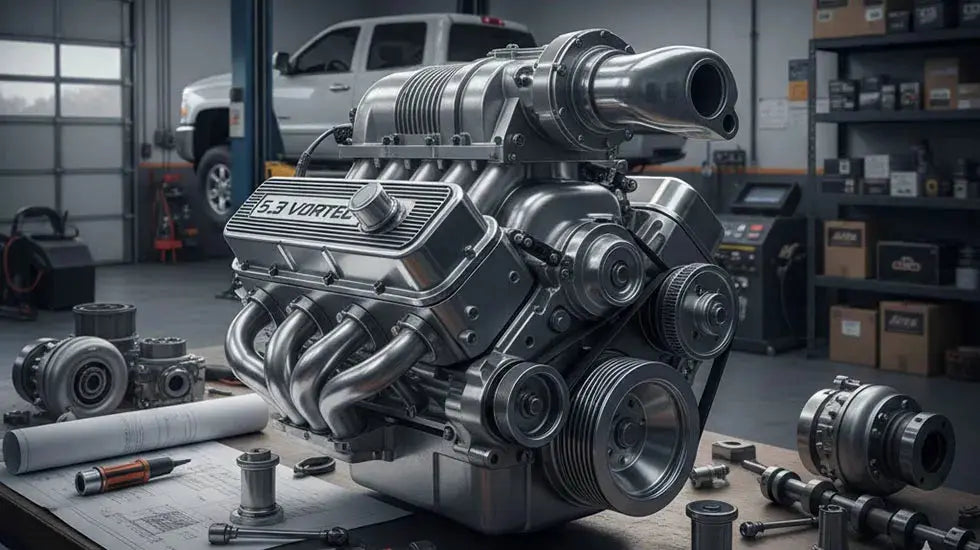Pregúntale a cualquier mecánico: "¿Cómo puedo aumentar la potencia de mi auto?". Lo primero que te dirá es que actualices el sistema de escape. ¿Por qué el tubo de escape?, te preguntarás. Porque obtener más potencia del motor empieza y termina con el flujo de aire.
Pequeños ajustes en el sistema de escape, como la sustitución de la toma de aire frío, los escapes catback y los colectores, pueden no parecer una gran mejora. Sin embargo, estos pequeños cambios pueden marcar una gran diferencia en la potencia y el rendimiento.
Entre estas diversas mejoras, la sustitución del convertidor catalítico por un tubo de prueba es la más común entre los aficionados a los coches. En la mayoría de los casos, el convertidor catalítico representa la mayor restricción en el sistema de escape, ya que controla las emisiones, pero también regula el flujo de los gases de escape.
Entonces, ¿qué es un tubo de prueba?
Los tubos de prueba reciben diversos nombres: tubos rectos o tubos de alto flujo. Estos tubos forman parte del sistema de escape de repuesto, evitando el convertidor catalítico y el silenciador. Se trata de una pieza metálica larga y redonda, generalmente de acero inoxidable o aluminio.
En esencia, las tuberías de prueba se utilizan ampliamente en autos deportivos, muscle cars, vehículos modificados y todo tipo de motores de alta velocidad. No se recomiendan para vehículos de uso diario.
Beneficios de los tubos de prueba
A continuación se muestran algunos beneficios notables que obtendrá después de reemplazar su convertidor catalítico con un tubo de prueba.

Más caballos de fuerza y torque
El flujo suave de gas reduce la contrapresión, mejorando el rendimiento del motor. Esto se traduce en un aumento notable de la potencia y el par motor, especialmente en motores turboalimentados.
Mejor flujo de escape
La libre circulación de los gases de escape a través de los tubos de prueba ayuda a eliminar los gases viejos del motor. Esto significa que los gases de escape usados salen rápidamente de los cilindros y permiten la entrada de aire fresco y combustible, mejorando así la eficiencia.
Temperaturas de escape más bajas
Un tubo de prueba puede ayudar a reducir la temperatura de los gases de escape, ya que tiene menos límites en el sistema de escape. Esto mejora el rendimiento y la vida útil del motor, especialmente durante el uso en circuito o de alto rendimiento.
Sonidos más agresivos
Los tubos de prueba eliminan el sonido apagado que producen los convertidores catalíticos, lo que permite que el escape de su vehículo sea mucho más potente y robusto. El tono varía según la marca y el modelo del vehículo, las modificaciones realizadas al motor y el diseño del tubo de prueba.
Perder peso
Los convertidores catalíticos son componentes pesados. Si se reemplazan por un tubo de prueba más ligero, se reducirá el peso total del vehículo, mejorando así el rendimiento y la maniobrabilidad.
Menos costoso para aplicaciones de carrera
Un tubo de prueba es una opción más económica que reparar o reemplazar un convertidor catalítico en coches que solo se utilizan en circuito. Esto beneficia a los aficionados a las carreras que buscan el mejor rendimiento sin preocuparse por las normas de emisiones.
Desventajas del uso de tubos de prueba
Como dice el dicho, con todo hay una reacción igual y opuesta. Si bien las tuberías de prueba tienen sus ventajas, también presentan algunas desventajas. A continuación, se presentan algunas de las desventajas de usar tuberías de prueba.
Más emisiones
Los tubos de prueba eliminan los convertidores catalíticos, que aumentan las emisiones de gases altamente nocivos como el monóxido de carbono y los óxidos de nitrógeno. El resultado podría ser contaminación atmosférica y daños ambientales.
Cuestiones legales
Los tubos de prueba están prohibidos en muchos lugares debido a que evaden las regulaciones de emisiones. Su uso puede resultar en multas, inspecciones suspendidas o incluso la incautación del vehículo.
Ruido fuerte
Sin un convertidor catalítico, el ruido del escape puede ser mucho más fuerte. Esto puede ser molesto y podría infringir las leyes locales sobre ruido, lo que puede acarrear más problemas legales.
Riesgos de garantía y seguro
Instalar tubos de prueba puede invalidar la garantía de su vehículo o provocar la denegación de su seguro. Los fabricantes o las aseguradoras también podrían desaprobar el cambio en el sistema de escape.
Activación de la luz de verificación del motor
La extracción del convertidor catalítico suele encender la luz de verificación del motor porque no se obtiene la lectura correcta de los sensores de oxígeno. Esto puede dificultar el diagnóstico de otros problemas reales del motor.
Posibles daños a otros componentes
Los tubos de prueba pueden alterar el flujo del escape. Esto podría provocar sobrecalentamiento o dañar otros componentes, como el colector de escape o los sensores, que no estaban diseñados para la configuración modificada.
Efecto del valor de reventa
Los coches con tubos de prueba pueden disuadir a los compradores potenciales debido a la legalidad de dicha modificación, el aumento del nivel de ruido y el alto coste de reinstalar el convertidor catalítico original. Esto puede reducir el valor de reventa del coche.
Tipos de tubos de prueba
Al intentar maximizar el rendimiento del sistema de escape de su vehículo, el tipo de tubo de prueba utilizado puede influir significativamente en el rendimiento y el sonido. Exploremos dos de los tipos principales: resonante y no resonante.
Tubos de prueba resonantes
Los tubos de prueba resonantes incorporan una cámara o deflector de insonorización. Esta cámara disipa el ruido extremo y los tonos desagradables de una configuración de tubería directa sin resonancia. La ventaja de usar este tubo es que produce un sonido de escape más definido y tolerable, especialmente a altas RPM.

Tubos de prueba no resonantes
Los tubos de prueba sin resonancia son diseños rectos sin elementos que absorban el sonido. Esto produce un sonido de escape más directo y, por lo general, más fuerte.

La ausencia de contrapresión proporciona el mejor flujo posible de gases de escape, lo que se traduce en una mejora considerable del rendimiento, especialmente para quienes realizan conducción de alto rendimiento. Sin embargo, en cuanto al sonido, puede resultar molesto para algunos, pero muy emocionante para otros entusiastas.
¿Son legales los tubos de prueba?
Existen regulaciones establecidas en muchas regiones, especialmente donde el impacto ambiental está estrictamente regulado, para limitar excesivamente las emisiones. La mayoría de estas regulaciones apuntan a modificaciones que pueden deteriorar aún más la calidad del aire.
Cuestiones de legalidad en diversas regiones
Estados Unidos
- Regulaciones Federales: Las regulaciones federales en EE. UU. se refieren principalmente a las normas de emisiones. No existen prohibiciones federales directas contra los tubos de prueba, pero su instalación puede hacer que el vehículo incumpla con las normas de emisiones, especialmente en estados como California, con regulaciones estrictas.
- Regulaciones estatales: Estados como California tienen normas de emisiones estrictas, y la instalación de tubos de prueba no las superará. Las consecuencias incluyen multas, problemas con el registro del vehículo y posibles litigios.
- Regulaciones locales: Otras jurisdicciones locales pueden establecer restricciones legales adicionales sobre las modificaciones de vehículos. Conviene verificar si alguna ordenanza o normativa local se aplica a cualquier modificación planificada.
unión Europea
- Normas Euro : Las autoridades de la Unión Europea han establecido las denominadas normas Euro para controlar las emisiones de los vehículos. Si bien los tubos de ensayo no están prohibidos, modificar el sistema de emisiones de un vehículo puede hacer que no cumpla las especificaciones.
- Legislación específica de cada país : Los estados miembros de la UE pueden tener diferentes leyes sobre la modificación de vehículos. Se recomienda consultar con las autoridades locales o con mecánicos cualificados para comprender la normativa específica de su país.
Otros países
- Asia - Países como Japón y Corea del Sur tienen estándares de emisiones estrictos, y modificar el sistema de emisiones de un vehículo puede generar problemas legales.
- Australia : La normativa australiana varía según el estado y el territorio. Si bien algunas regiones pueden ser más permisivas, es fundamental consultar la normativa local antes de instalar tuberías de prueba.
Posibles sanciones y problemas de inspección
- Multas - Las multas pueden ser desde tan sólo un par de dólares por infracciones menores hasta multas muy elevadas dependiendo de la gravedad de la infracción.
- Incautación de vehículos : en determinadas circunstancias, las autoridades pueden incautar vehículos con configuraciones ilegales.
- Problemas de matriculación del vehículo : La instalación de tubos de prueba en su automóvil puede hacer que se destaque como un problema durante el momento de su matriculación o reinscripción.
- Pruebas de emisiones fallidas : esto puede generar más limitaciones en el funcionamiento de su vehículo o puede impedir por completo su uso.
Consejos para los usuarios
Conocer la escala legal y poder tomar las medidas adecuadas le permitirá disfrutar del rendimiento de su vehículo y evitar problemas legales graves. Para evitar posibles problemas legales y multas, considere lo siguiente.
- Consulte las regulaciones locales : siempre investigue y cumpla las regulaciones locales, estatales y federales.
- Busque asesoramiento profesional : consulte con un mecánico calificado o un experto en automoción para comprender las implicaciones legales de las modificaciones.
- Considere modificaciones alternativas : explore otras modificaciones que mejoren el rendimiento que sean legales y cumplan con los estándares de emisiones.
- Observe el procedimiento de revisión : si su estado requiere revisiones periódicas del vehículo, prepárese para corregir cualquier problema en el sistema de emisiones de su automóvil.
¿Los tubos de prueba aumentan la potencia?
Sí, los tubos de escape aumentan la potencia. Un flujo de escape más suave se traduce en una mejor respiración del motor. Esto significa que puede aspirar y expulsar aire con mayor facilidad. Esto se traduce en una mayor eficiencia volumétrica.
Otro factor que contribuye a la potencia es la reducción de la contrapresión. El motor no tiene que esforzarse tanto para expulsar los gases cuando hay menos contrapresión.
Si bien los tubos de prueba ciertamente pueden agregar algo de potencia, varias variables hacen que las diferencias varíen.
- Modificación del motor : los motores altamente modificados con sistemas de escape de alto rendimiento pueden lograr pequeñas mejoras con la adición de tubos de prueba; otros motores pueden experimentar cambios significativos en el rendimiento.
- Tipo de vehículo : El tipo de vehículo en el que se instala el tubo de prueba puede ser otro factor. Los autos más deportivos con motores de alto rendimiento pueden obtener mejoras más sustanciales que los sedanes o SUV.
- Estilo de conducción : Tu estilo de conducción también puede influir en la potencia que crees haber ganado. Los conductores agresivos que prefieren aumentar las revoluciones del motor suelen notar la reducción de las restricciones del escape mucho más que los conductores más conservadores.
Es difícil determinar con exactitud el aumento de potencia debido a los factores descritos anteriormente, que varían según la configuración. Sin embargo, se puede esperar un aumento de entre 5 y 10 caballos con un nuevo tubo de prueba.
Tubos de prueba vs. bajantes: ¿cuál es la diferencia?
Los tubos de prueba y los bajantes siguen siendo dos de los temas más debatidos entre los aficionados. Si bien pueden parecer similares para los lectores desinformados, difieren significativamente tanto en su función como en sus beneficios.
Tubos de prueba
Un tubo de prueba es esencialmente una tubería recta que reemplaza al convertidor catalítico en el sistema de escape. Esto permite un mejor flujo del escape, lo que se traduce en posibles mejoras de rendimiento.

Sin embargo, los tubos de prueba no están exentos de graves inconvenientes. Al eludir el sistema de control de emisiones, pueden aumentar significativamente las emisiones del tubo de escape y, dependiendo de la región, pueden acarrear problemas legales debido a las estrictas normas de emisiones.
Bajantes
Un tubo de escape es la parte del escape que conduce los gases desde el turbocompresor o el colector del motor hasta el convertidor catalítico o el tubo de prueba. Los tubos de escape de alto rendimiento optimizan el flujo de los gases que pasan por la sección del tubo de escape y, como resultado, pueden aumentar la potencia y el par motor.

Los tubos de escape de repuesto suelen ofrecer una gama de perfiles de sonido diferentes, desde sutiles hasta totalmente agresivos. Puedes ajustar el sonido del escape a tu gusto.
¿Deberías instalar tuberías rectas en tu automóvil?
A menos que sepa exactamente lo que está haciendo y tenga grandes planes para todo su sistema de escape, instalar un tubo de prueba es una excelente manera de mejorarlo. Si lo que busca es el sonido del escape, lo mejor sería instalar un sistema de escape catback de buena calidad.
¿Qué opinas sobre las pruebas de tuberías? ¿Las usarías en tu coche? ¡Cuéntanoslo en un comentario!
Recomendación de tubos de prueba

Tubos de prueba para Nissan 350z Infiniti G35 (2003-2007) con juntas y pernos
Actualice su Nissan 350Z o Infiniti G35 2003-2007 con los tubos de escape/descendentes FLASHARK de acero inoxidable de alto rendimiento. Diseñados para mejorar el flujo de escape, aumentar la potencia y ofrecer un sonido más agresivo.
Precio: $158
Comprar ahora
Tubos de prueba para Nissan 370z Infiniti G37 Z34 2008-2018
Mejore su Nissan 370Z o Infiniti G37 2008-2018 con los tubos de escape/descendentes FLASHARK de acero inoxidable. Diseñados para aumentar la potencia, mejorar el flujo de escape y ofrecer un sonido de escape agresivo.
Precio: $175
Comprar ahora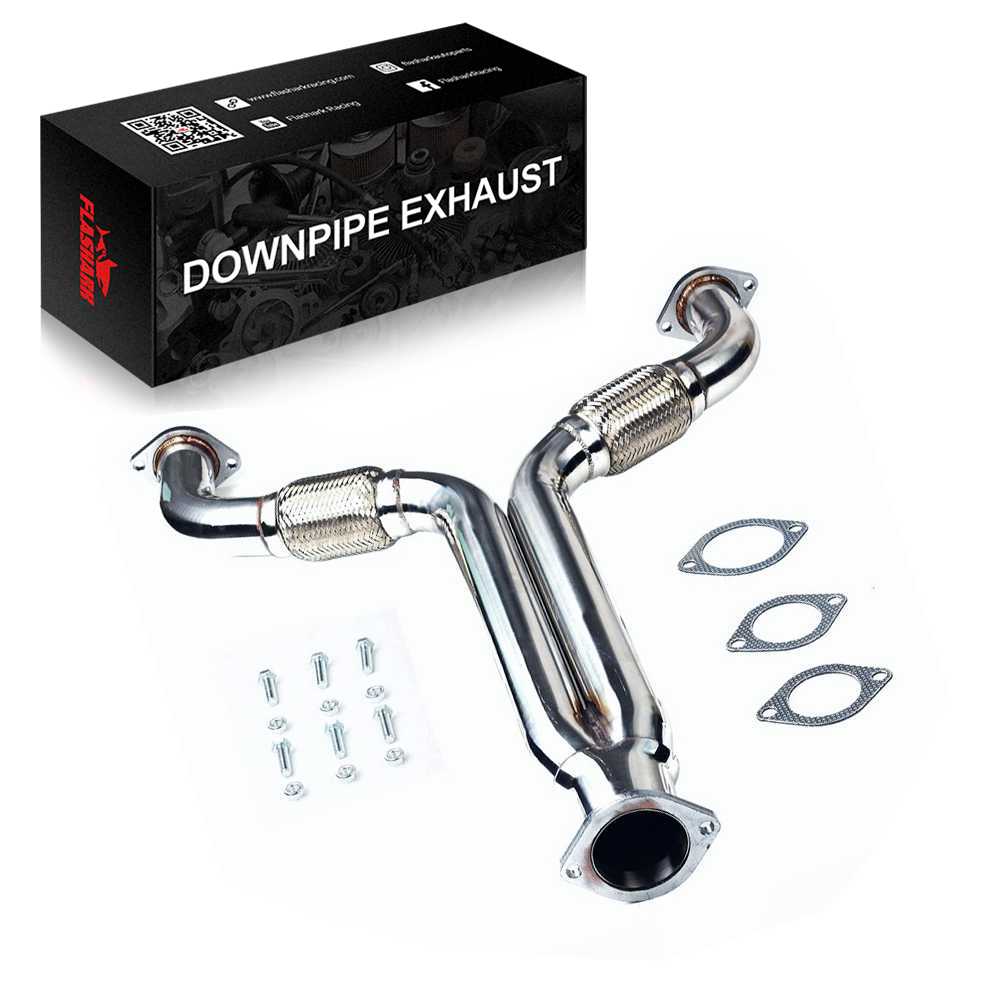
Tubos de prueba resonantes para Nissan 350Z 3.5L (2003-2009) y Infiniti G35 (2005 y 2007)
Los tubos de escape FLASHARK en Y para Nissan 350Z (2003-2009) e Infiniti G35 (2005 y 2007) aumentan la potencia y el par motor al mejorar el flujo de escape. Fabricados en acero inoxidable resistente, ofrecen un rendimiento superior y un sonido de escape más potente.
Precio: $98
Comprar ahora

